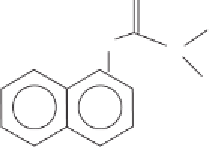Agriculture Reference
In-Depth Information
THE BHOPAL INCIDENT
No case illustrates the need for green engineering principles in every design
better than the chemical accident at Bhopal, India. No designer wants to read a
newspaper account such as the following about one's project:
In the middle of the night of December 2-3, 1984, residents living
near the Union Carbide pesticide plant in Bhopal, India awoke coughing,
choking, gasping, and in the case of thousands, slowly dying. Half a day later,
half a world away, company executives sleeping soundly near the Danbury,
CT headquarters of Union Carbide Corporation awoke in the middle of
the night yawning and grumbling at the sound of telephones ringing
.
Shortcuts taken in the name of profit—authorized by the highest executives
within the company—had just killed thousands of innocent citizens. It was
the worst industrial disaster of the 20th century, forever changing the public's
trust of the chemical industry. Union Carbide claimed it was sabotage by
a disgruntled employee that led to the disaster, but how much did the
company already know about the dangerous conditions its shortcuts and
bottom-line focus had created?
5
...
Among the largest air pollution disasters of all time occurred in Bhopal, in
1984 when a toxic cloud drifted over the city from the Union Carbide pesticide
plant. This gas leak led to the death of 20,000 people and the permanent injury
of 120,000 others. We often talk about a failure that results from not applying
the sciences correctly (e.g., a mathematical, error, an incorrect extrapolation of a
physical principle). Another type of failure results from misjudgments of human
factors. Bhopal had both.
Although the Union Carbide Company was headquartered in the United
States, as of 1984 it operated in 38 countries. It was quite large (the thirty-fifth-
largest U.S. company) and was involved in numerous types of manufacturing,
most of which involved proprietary chemical processes. The pesticide manufac-
turing plant in Bhopal had produced the insecticides Sevin and Cararyl since
1969, using the intermediate product methyl isocyanate (MIC) in its gas phase.
The MIC was produced by the reaction shown in Figure 3.4.
6
This process
Figure 3.4
Chemical reaction
producing methyl isocyanate at
the Bhopal, India, Union Carbide
plant.
O
CH
3
OH
O
N
H
+ CH
3
N
C
O




Search WWH ::

Custom Search